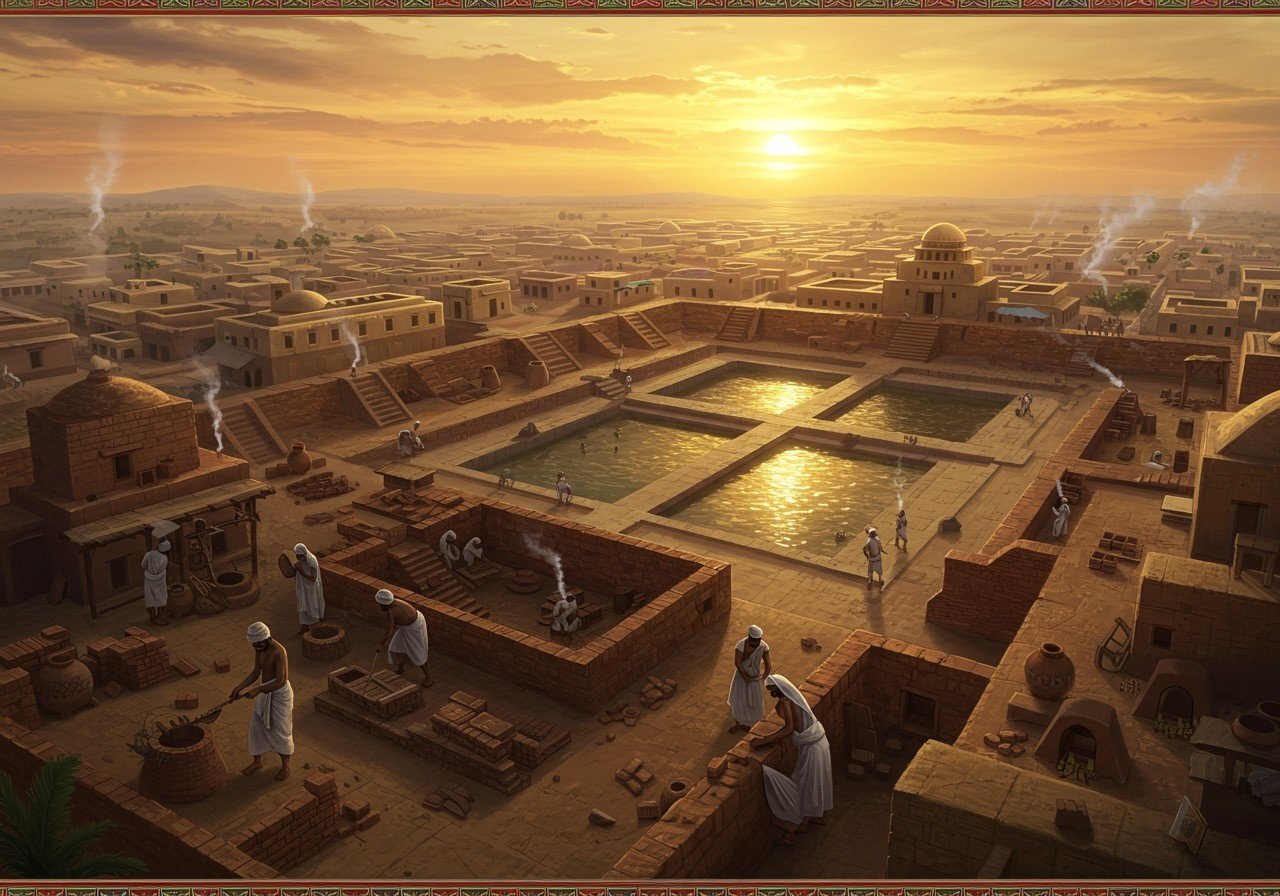
The Indus Valley Civilization, also known as the Harappan Civilization, flourished from approximately 2600 BCE to 1900 BCE in the northwestern regions of the Indian subcontinent. This civilization was a pioneer in urban planning, showcasing remarkably sophisticated city layouts for its time. Its cities featured well-organized streets, structured blocks, advanced drainage systems, and efficient water supplies. Notable architectural and planning features included the citadel, granary, and the Great Bath, setting a precedent for future urban development.
Overview of the Indus Valley Civilization
The Indus Valley Civilization encompassed a vast area, with key sites like Harappa, Mohenjo-Daro, and Dholavira. Unearthed in the 1920s, this civilization holds immense significance in Indian history. Its defining characteristics include:
- Social Structure: Highly organized communities with distinct social hierarchies and complex social interactions.
- Economy: A thriving economy primarily based on trade and agriculture, with evidence of extensive trade networks.
- Technological Advancements: Demonstrated remarkable skill in metallurgy, ceramics, and textile production, indicating advanced craftsmanship.
Archaeological discoveries provide valuable insights into the urban planning and architecture of this ancient civilization.
City Planning
Cities like Mohenjo-Daro and Harappa showcased a grid pattern layout, demonstrating advanced urban planning. Key aspects of their city planning include:
- Division into Sectors: A clear division of the city into sectors, with the Citadel serving as the administrative and religious center and the Lower Town designated for residential areas.
- Standardized Brick Sizes: The use of standardized brick sizes ensured uniformity in construction and facilitated efficient building practices.
- Wide Streets: Straight, wide streets facilitated efficient traffic management and movement of goods and people.
- Public Buildings: Strategically located public buildings like granaries and marketplaces served essential community functions.
- Open Spaces and Courtyards: The incorporation of open spaces and courtyards provided ventilation, natural light, and areas for social gatherings.
This meticulous town planning contributed to the civilization’s sustainability and resilience against natural disasters.
Architecture
The Indus Valley Civilization employed advanced construction techniques using baked bricks, stone, and timber. Key architectural features include:
- Residential Buildings: Multi-story structures with flat roofs and a uniform design, reflecting a planned approach to housing.
- Bathrooms and Toilets: The presence of bathrooms and toilets within houses highlights a focus on sanitation and hygiene.
- Public Buildings: Structures like the Great Bath in Mohenjo-Daro served ritualistic purposes, showcasing the civilization’s cultural practices.
- Water Supply: Wells and reservoirs ensured a reliable water supply for the urban population.
- Defensive Structures: Walls and fortifications in some cities provided defense against external threats.
- Decorative Elements: Symbolic motifs and decorative elements enhanced the aesthetic appeal of buildings and public spaces.
Their architecture reflects a harmonious blend of functionality and aesthetic sensibility.
Drainage System
The civilization boasted a remarkably sophisticated drainage system with covered drains running alongside the streets. Key elements of this system include:
- Precisely Cut Bricks: Precisely cut bricks were used to construct the drains, ensuring efficient water flow.
- Inspection Holes: Inspection holes allowed for regular maintenance and cleaning of the drainage system.
- Household Drains: Drains from individual households connected to the main drainage system, facilitating effective waste disposal.
- Soak Pits: Soak pits played a crucial role in managing wastewater and preventing waterlogging.
- Hydraulic Engineering: The entire drainage system showcased the civilization’s advanced knowledge of hydraulic engineering.
These well-designed systems provided significant environmental and health benefits.
Connecting Ancient Wisdom with Modern Rituals
The advanced city planning and architecture of the Indus Valley Civilization demonstrate a deep connection to Hindu rituals and beliefs. At Poojn.in, we help you connect with this rich heritage through authentic puja items that honor these ancient traditions.
For your Vastu Puja (architectural ceremonies) and foundation-laying rituals, Poojn.in offers:
- Pure Copper Vastu Kalash Sets: Start your architectural endeavors with the blessings of a traditional kalash.
- Traditional Yantra and Mandala Designs: Incorporate sacred geometry into your space for positive energy.
- Panchratna Stones for Foundation Rituals: Lay the foundation of your building with auspicious gemstones.
- Complete Vastu Puja Samagri Kits: Find everything you need for a complete and authentic Vastu ceremony.
- Brass and Copper Vessels for Sacred Ceremonies: Enhance your rituals with traditional and durable puja vessels.
Just as the Indus Valley people built their cities with careful planning and spiritual alignment, you can ensure your home or building follows sacred Vastu principles with our carefully curated ritual items. Explore our collection at Poojn.in.
Conclusion
The Indus Valley Civilization stands as a testament to the ingenuity and foresight of our ancestors. Their advanced urban planning, impressive architecture, and sophisticated drainage systems demonstrate a society that valued organization, cleanliness, and community well-being. By studying this remarkable civilization, we can glean valuable lessons for modern urban development and create sustainable and harmonious living spaces.
Dravidian and Nagara Architecture: A Comparison of Styles
Dravidian Temples: A Guide to Their Key Architectural Features
Exploring Dravidian Architecture: South India’s Ancient Temples


